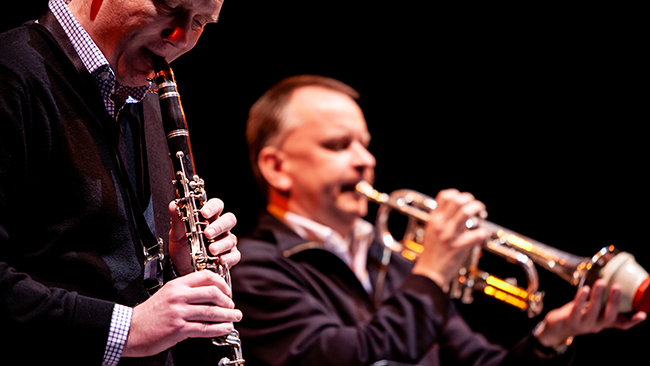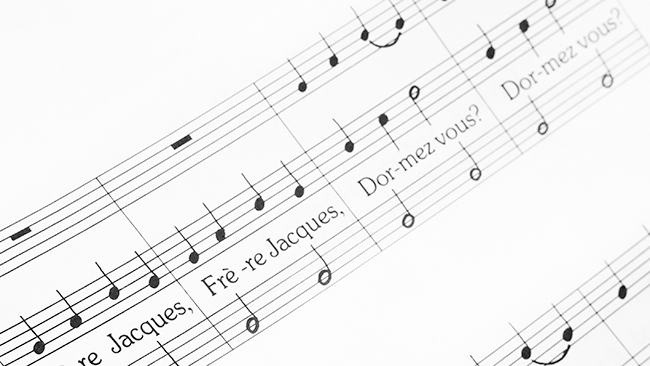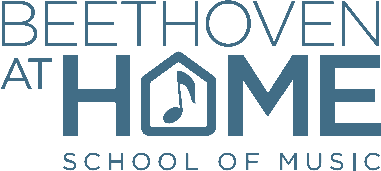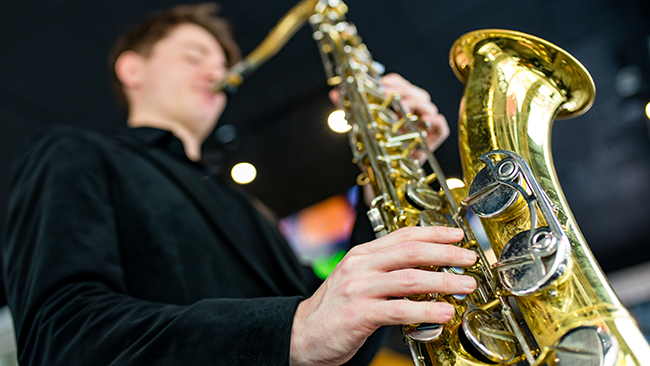Improvisation is part of the practice, work, and play for many musicians, but it can be puzzling for students who are just starting out.
People are excited about the concept of "creating music" on the spot and learning to improvise. We want to express ourselves, experience the feeling of freedom and mastery that comes from not needing a plan or sheet music to create. We want to hear our own voice in the sound of our music.
Improvisation offers us all of that, but it doesn't work exactly the way you probably think it does.
My goal here is to help you understand what improvisation can be, how to approach practising it yourself, and what to look for when finding a teacher to help you improvise or if you want to start exploring how to teach improvisation.
What is improvisation?

If you think of music as language, performing repertoire is like reciting a speech, a play, or a passage from a book. We know exactly where we'll start and end, and we know more or less exactly what's coming next as we work our way through the piece.
Improvising is like talking. It could be a conversation, a lecture, or even a rant. In any case, the structure is flexible and we don't know exactly what we're going to say next.
But we do have an acute sense of what we can say. We are speaking a particular language (or maybe a blend of two or three, depending on where you live). That language has a specific sound, vocabulary, and grammar. Depending on whom we're talking to, we adjust our style (formal vs. casual, simpler or more complex vocabulary, tone of voice, cadence) to be understood, believed, trusted, etc. We do all of this with relatively little effort. Everyone has an innate awareness and a masterful command of these elements in their mother tongue(s).
This is how it works with music too. Music is not a single, universal language: it's a whole world of languages and dialects, as vast and quirky and wonderful as our natural languages. And like natural language, while many musical languages share some common roots or underpinnings, each has its own unique vocabulary, structure, and aesthetics.
An improviser in this sense is a musician who knows the ins and outs of a given musical language well enough to create and respond to statements in that language spontaneously, in real time.
So if you're interested in improvisation, start by asking yourself: in what context? Blues? Jazz? Rock? Funk? Folk? Contemporary? "Free"? Knowing which styles you're interested in leads you to the next step: vocabulary and ear training.
Do I need to know more music theory?
That depends on what style you're interested in. If you know at least one scale and a couple of pieces in the style you want to learn, you're probably all set to get started, and I outline three games below that beginning improvisers can immediately find music in. Music theory is only relevant or helpful to the extent that it deepens your understanding of the musical vocabulary you're interested in.
What about ear training?

In virtually all styles of improvisation, we rely on two things above all else:
-
Musical vocabulary
-
A well-developed ear
Ear training, learning to recognize intervals, chord qualities, rhythms, patterns, and harmonic progressions, allows you to respond to those aspects of music.
Learning vocabulary (melodies, progressions, rhythms), especially by ear, gives you the tools to respond to what you're hearing, and teaches you the structure and sounds of your musical language.
The good news is that working in either area will help you in the other.
The most important thing you can do, especially as a beginner, is expanding your vocabulary. Learn and memorize lots of melodies, especially by ear. It's a simple process: find a melody you like. Listen to it a lot until you can sing it. Then find it on your instrument, one note at a time, and practice until you have it memorized. Rinse and repeat often, for the rest of your life. This will train your ears, especially for interval recognition.
Mixing melodies
Once you know at least one melody and one scale on your instrument, try this.
Pick a note. Go to YouTube or your music streaming app and search "Cello Drone in (note)."
Press play. Now you're hearing the tonic of a key, basically the harmonic and melodic "home base."
Now play and/or sing every melody you can hear in this key.
Anyone can find at least three: think of nursery rhymes, commercial jingles, themes to your favourite shows, or music from movies. Many will start or end on the tonic, matching the drone (for example, try "Frère Jacques," which does both).
See how many you can find.
Having done this, you may have already realized that you have a lot of latent musical vocabulary.
Now see if you can play two of those melodies, one after the other, in a way that makes sense to you. Imagine you're a DJ mixing a set: which of these things seems to transition smoothly into the next?
You'll have to use your own musical intuition here. Experiment. You'll know when something worked: you'll feel the spark, a little connection.
Morphing melodies
The next step is to start altering the melodies you know, ornamenting and twisting them to reveal different characters within them.
One way to come at this is to imagine a song or performed by a different artist than the usual." "Twinkle Twinkle Little Star," performed by Miles Davis. "Driver's License," performed by Metallica. "La vie en rose," performed by Simon and Garfunkel. Whatever songs you like, whatever artists you like.
Try it yourself. The most important part is the silence before you play, where you're imagining what it could sound like, and getting that sound in your head as loud as possible.
Once it's loud and clear in your imagination, you can try it on your instrument, and you'll naturally make all sorts of adjustments in pursuit of that sound. You'll discover a budding relationship between the strength of your intention and what comes out of your instrument. You'll also discover lots of things to practice and ask your teachers about.
Other things to try:
-
Playing the melody at half or double speed
-
Removing notes or adding some notes of your own at the start or end
-
Breaking it into fragments: play a couple of notes, then rest, then the next few notes, then rest. Repeat a fragment if you want. Often you'll discover there are songs within songs.
This leads into another fun game that can result in some lovely music.
Pattern play

Now instead of known melodies, you'll make up some patterns and weave between them.
A pattern can be anything, as long as you can first remember it and then reliably execute it. If you can read and write music, you can write your patterns down to help with the first part, but keep them reasonably short initially.
You want to find ideas that loop smoothly. Don't judge them too harshly; think of the first four notes of "Frère Jacques" again. Perfectly lovely music that loops just fine when you hear it again, but I've heard students dismiss similar ideas of their own as trivial or not worthwhile.
A great secret of improvisation is that almost anything can either sound trivial or profound. It's largely a matter of context.
Another great secret of improvisation, and music in general: repetition legitimizes. Ideas gather weight as they are repeated, up to a point.
So if you've gotten this far, be generous with yourself. Three notes could be a great pattern, especially when you have two others to switch to when you get bored.
Here's the game:
-
Find three different loops on your instrument.
-
Get comfortable with each one, to where playing it is second nature.
-
Set a one-minute timer and begin your improvisation. The rules for now are that you must loop each pattern at least twice. You can play patterns in any order, switching at any time. Aim to create something that winds down during the last 5-10 seconds and ends in a musical way: for example, you could slow down, and hold the last note as the timer ends.
Depending on the length of your patterns and your chosen tempo, the form of your piece could go AABBCC. Or it could be ABACABBC. Or CBBAACAC. Or any number of other sequences: really, the only limits are time and your sense of the music.
You can do this game a cappella, with a friend or teacher, or with a backing track. As a young jazz musician, I practised with a variation of this game by choosing one or two phrases, and transposing them through a chord progression with a backing track or a friend accompanying me on guitar or piano. The goal is always to be as musical as you can, given the limitations. The right patterns will challenge you, but not too much: you still want to be able to flow!
Find a teacher to take it further
These games will get you started and let you experiment with the essentials of improvising in any style. You can revisit them as you improve, and you'll discover more and more secrets in them. Masters can and do play these games and make wonderful music. But regardless of level or style, all improvisers are playing with familiar musical material, arranging it in real time according to rules that we've invented or adopted from others and modified. It's almost exactly analogous to conversation.
Which is why it's important to remember that conversations happen in a given language. To make progress, you'll want to learn more about the musical languages that interest you. Find someone who knows the music you love, and take lessons with them! A good teacher will guide your ears and your thinking, helping you get familiar with the vocabulary and the style of the style you're drawn to. You'll play together a lot (after all, we learn a lot about our natural languages through conversation with masters), and they'll give you exercises to help you practice and get unstuck when you run into tricky concepts.
Find someone who's fun to work with, who demystifies music for you as much as possible, and who keeps you playing, and you'll be on the way to finding your own voice and conversing in your favourite musical language.
Have fun!






